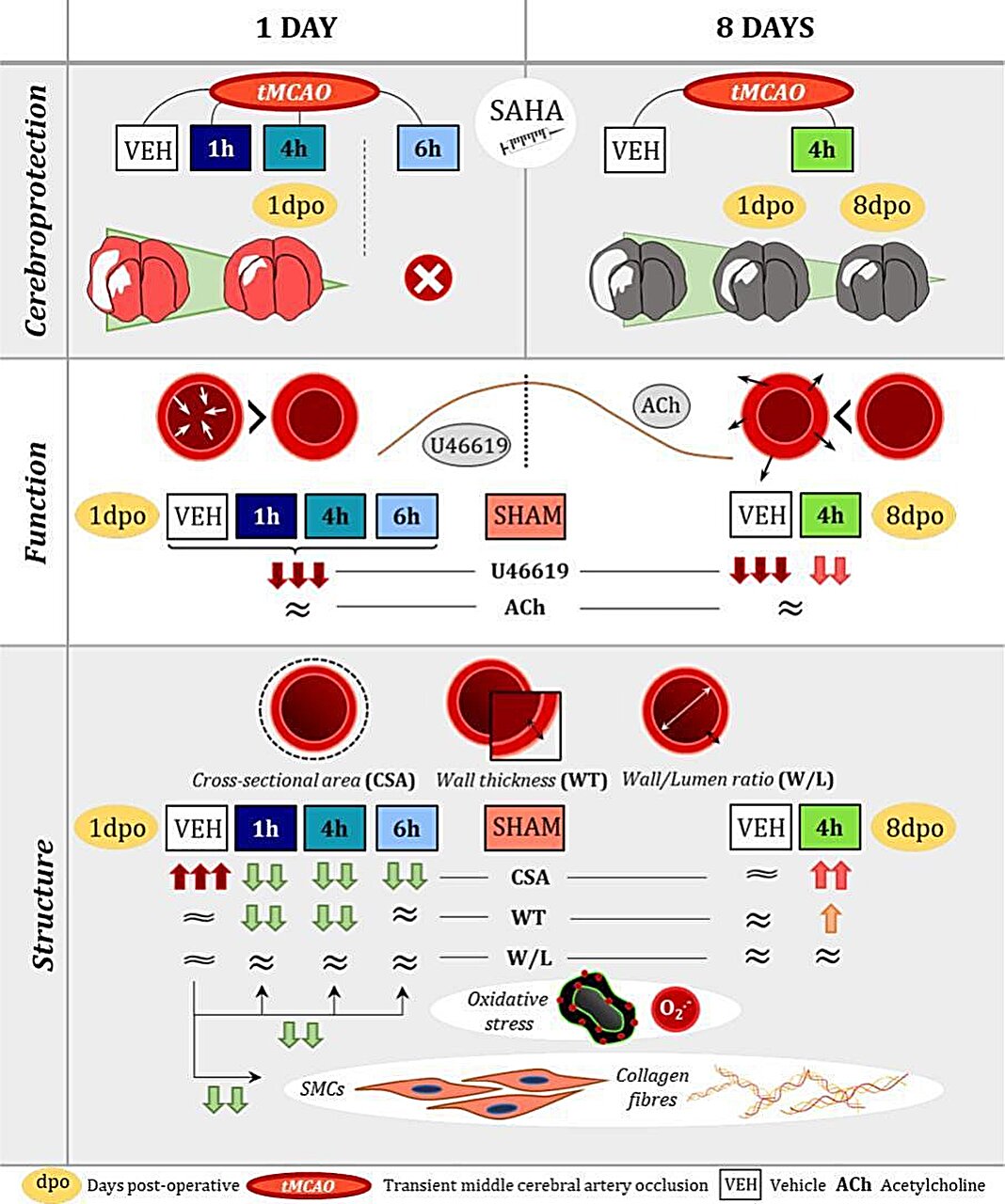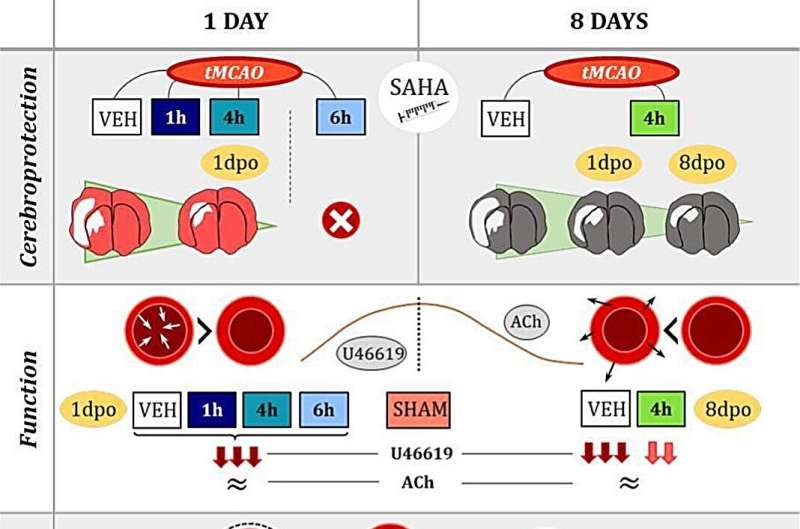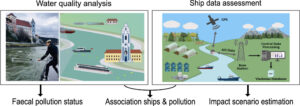

A study coordinated by Dr. Francesc Jiménez-Altayó, researcher at the Institut de Neurociències of the UAB (INc-UAB) and at CIBERCV, shows that temporary lack of blood flow to the brain can lead to lasting changes in the small arteries of the abdomen in rats with high blood pressure. The research also explored the effects of a drug called SAHA in mitigating these changes, finding that it prevented some early alterations in the arteries and reduced long-term brain damage.
The study published in Life Sciences investigated the impact of transient cerebral ischemia on peripheral blood vessels in hypertensive rats, as high blood pressure is the leading risk factor for stroke.
Researchers induced a brief interruption of blood flow to the brain and examined its effect on the function and structure of mesenteric arteries. They measured the arteries’ ability to contract and relax, along with structural changes like wall thickness, cell numbers, collagen content, and oxidative stress, at one and eight days after blood flow was restored.
The findings revealed that the ischemic event impaired the arteries’ ability to contract, an effect that persisted eight days later. Additionally, the arteries showed thickened walls and increased size, likely due to heightened collagen deposition.
To address these changes, the team tested the administration of suberoylanilide hydroxamic acid (SAHA) during the restoration of blood flow. The drug successfully prevented some of the early arterial changes and provided long-term protection against brain damage caused by transient ischemia.
“These findings are particularly promising since SAHA is already approved for treating a type of cancer, and in this study, we used doses equivalent to those given to humans,” explained Andrea Díaz-Pérez, lead author of the study and researcher at the INc-UAB.
“This opens the door to further research into whether it could also reduce stroke-related brain damage in hypertensive patients. However, more studies are needed to fully understand its long-term effects on blood vessels,” added Dr. Jiménez-Altayó, professor in the Department of Pharmacology, Therapeutics and Toxicology at the UAB.
This research provides new insights into how temporary blood flow interruptions in the brain can affect blood vessels outside the central nervous system, particularly in hypertensive conditions. It also highlights the potential of SAHA as a protective agent against stroke-related brain damage. Nonetheless, further work is needed to develop strategies that fully prevent persistent vascular damage throughout the body.
More information:
Andrea Díaz-Pérez et al, Transient cerebral ischaemia alters mesenteric arteries in hypertensive rats: Limited reversal despite suberoylanilide hydroxamic acid cerebroprotection, Life Sciences (2024). DOI: 10.1016/j.lfs.2024.123247
Citation:
Cerebral stroke in animal models with hypertension found to affect arteries in other body regions (2024, November 29)
retrieved 29 November 2024
from https://medicalxpress.com/news/2024-11-cerebral-animal-hypertension-affect-arteries.html
This document is subject to copyright. Apart from any fair dealing for the purpose of private study or research, no
part may be reproduced without the written permission. The content is provided for information purposes only.



